Resnick Sustainability Institute and Joint Center for Artificial Photosynthesis
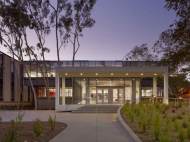 The most sustainable structure you can build is the one you already have. California Institute of Technology (Caltech) created a state-of-the art facility for two new centers of sustainability research: The Resnick Institute for Science, Energy, and Sustainability, whose mission is to address challenges related to the creation and conservation of energy, and the Joint Center for Artificial Photosynthesis, a DOE Innovation Hub.
The most sustainable structure you can build is the one you already have. California Institute of Technology (Caltech) created a state-of-the art facility for two new centers of sustainability research: The Resnick Institute for Science, Energy, and Sustainability, whose mission is to address challenges related to the creation and conservation of energy, and the Joint Center for Artificial Photosynthesis, a DOE Innovation Hub.
Designed by John Friedman Alice Kimm Architects, the 3,316 square-meter (35,700 square-foot) Resnick Sustainability Institute is at the heart of Caltech’s energy science and technology initiatives. To create an appropriate new home for these two centers, the vacant Jorgensen Laboratory, a fortress-like concrete structure originally built in 1974, was transformed into a model of sustainability, energy efficiency, and collaborative creativity.
The transformation involved the removal of large, light-blocking concrete overhangs – a move which improves views from both in and out of the building. These shades were replaced by high-efficiency glass walls and skylights that fill the building with natural light.
The introduction of a large skylit stair atrium, which introduces light deep into the structure, encourages connectivity between the scientists. A new transparent Entry Pavilion for lounging, special events, and educational presentations replaces an uninviting exterior bridge and reconnects the building to the overall campus. They also retrofitted a ring of second floor terraces into 465 square meters (5,000 square feet) of much needed research space with a curtain wall which provides a facade that is light and optimistic.
Caltech and its partners were able to reuse or recycle over 90 percent of the materials removed from the original building. Everything from concrete and re-bar to even the office furniture was recycled. They also used rapidly renewable, recyclable and regional materials during the renovation. Not a single detail was overlooked and the construction team even placed sandbags around the perimeter of the site to keep debris out of storm drains.
Resnick Sustainability Institute project incorporates both active and passive sustainable technologies and is slated to receive LEED Platinum status. Water saving features, such as low flow fixtures and dual flush toilets, as well as climate adapted landscaping lower the water consumption by 25 percent.
The combination of day lighting, green roof above entry pavilion, neutral dual duct HVAC scheme, high-efficiency lighting, high Albedo roof surface which reduces heat gain and a solar PV array which is assigned to offset a portion of the building’s energy demand reduces the overall building consumption by 37 percent.
Because the primary subject of the centers’ research involves sunlight, the architects chose to use the colors of the visible light spectrum (the rainbow) as the source of their interior aesthetic expression, particularly in furniture, accent walls, and floor patterning (in VCT and carpet). The first floor core of the building is wrapped with high-resolution satellite images of the rotating Earth. As the scientists circulate through the corridors, these dynamic images continuously remind them of the subject and importance of their research.

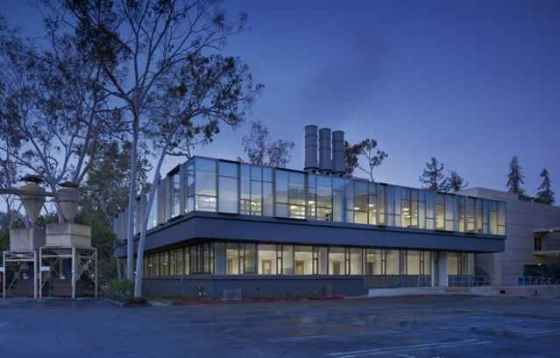
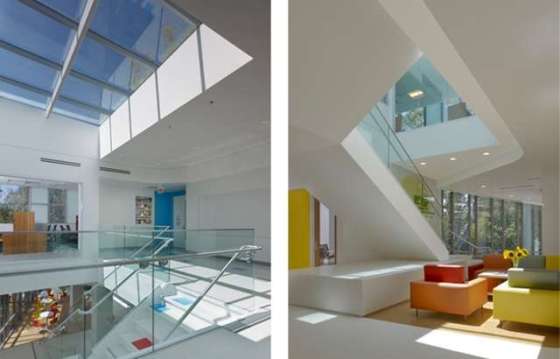
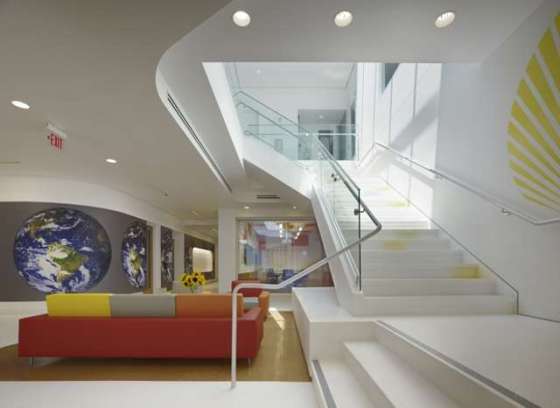
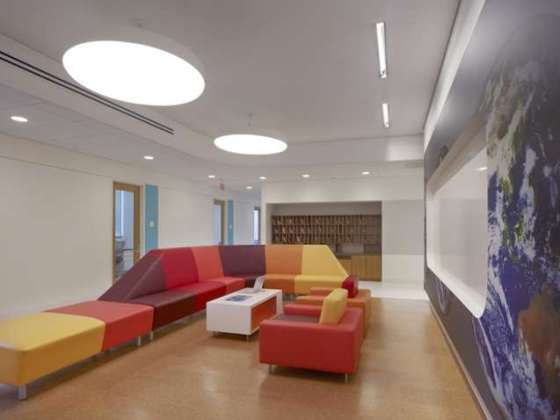
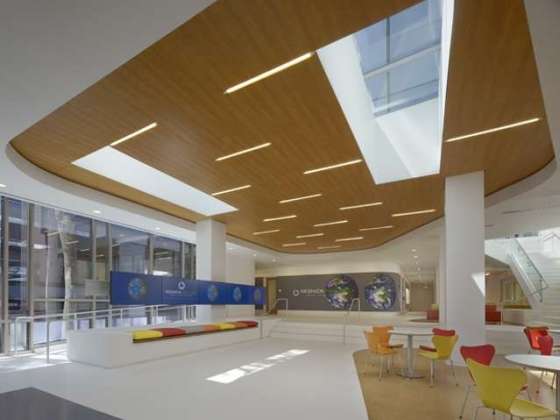
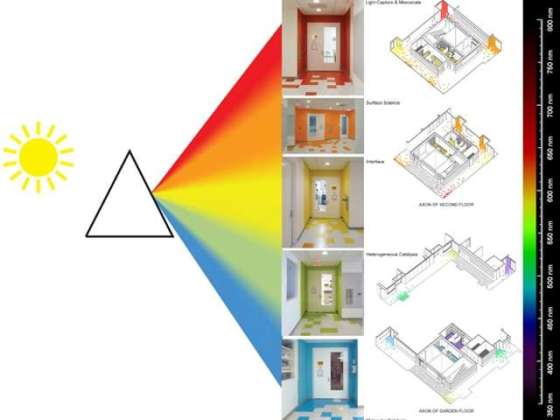








Leave your response!